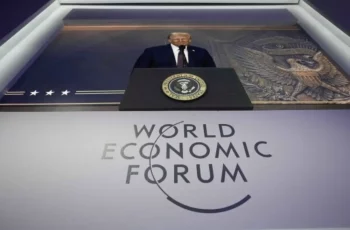
It has been six months since Hayat Tahrir al-Sham (HTS), a radical Islamist group led by Abu Mohammad al-Julani – now known as Ahmed al-Sharaa – seized control over parts of Syria. This significant development reshaped the landscape of the Syrian conflict, which has been ongoing since 2011 and has involved a complex web of internal factions, external powers, and regional actors. Simultaneously, the geopolitical environment in which Syria operates experienced a notable shift with the election of Donald Trump as President of the United States in November 2016. His administration’s approach to foreign policy, especially toward Syria, signaled a potential departure from previous policies and opened new avenues for diplomatic and economic engagement.
This convergence of developments – HTS’s rise and the evolving U.S. stance – has profound implications for Syria’s future, regional stability, and the role of international actors. In particular, recent moves by Washington to ease sanctions on Syria mark a potential turning point, albeit one fraught with challenges and conditionalities. This article critically examines the significance of sanctions relief, its implications for Damascus, regional actors, and Moscow, and explores the prospects for Syria’s stabilization and reconstruction.
The Context: Six Months of HTS Control and the Post-Conflict Landscape
Six months prior to the U.S. sanctions announcement, HTS – an umbrella of jihadist factions including remnants of al-Qaeda’s affiliate in Syria – had consolidated control over significant territories, especially in northwestern Syria. Led by Abu Mohammad al-Julani, HTS had effectively replaced other rebel groups and became the dominant force in Idlib province, presenting a complex challenge for the Assad regime, regional actors, and Western powers.
The new Syrian leadership, under President Bashar al-Assad, failed to address core issues such as disarmament of armed factions, border control, internal security, and an inclusive political transition. The government’s limited progress was compounded by external influences – particularly from Russia, Iran, Turkey, and Western nations – each pursuing divergent interests.
Meanwhile, President Donald Trump’s election campaign and subsequent policy statements indicated a potential shift in U.S. engagement. While the Obama administration had largely maintained a policy of limited engagement, primarily supporting opposition groups and imposing sanctions, Trump’s approach appeared more flexible and, at times, unpredictable – raising hopes among some Syrian factions and regional players for a new diplomatic opening.
U.S. Sanctions Relief: A Surprising Step Toward Engagement
On May 13, 2017, during his first Middle East tour, President Donald Trump announced the intention to begin lifting all sanctions on Syria. This was a surprising development, given the absence of a clear consensus within the U.S. government. Many analysts viewed it as a calculated move designed to leverage the new Syrian authorities, particularly President al-Sharaa, to pursue reforms and stability.
Following this announcement, the Office of Foreign Assets Control (OFAC) issued Syria General License (GL) 25 on May 23, which authorized all transactions with Syria and its government that would otherwise be prohibited under existing sanctions laws. This marked an important shift: the easing of restrictions that had been in place since 1979, with some measures dating back decades. Importantly, this move was not a full repeal of sanctions but a targeted, step-by-step easing designed to test the waters and exert leverage.
Additionally, the Department of State waived the Caesar Act sanctions for 180 days. The Caesar Act, enacted in 2019, aimed to pressure the Syrian government by targeting economic sectors and individuals involved in human rights abuses. Waiving these sanctions temporarily signaled a willingness to engage with Damascus, provided progress was made on key issues.
Complexities of Sanctions Relief
While the announcement seemed promising, the process of lifting sanctions on Syria is inherently complex and fraught with political considerations.
Legal and Legislative Hurdles: Many sanctions measures are embedded in legislation passed by Congress, requiring legislative approval for full repeal. Executive orders and sanctions regulations can be amended or revoked more easily, but the long-standing legal framework complicates rapid removal.
Conditionality and Reimposition: The use of General Licenses indicates that sanctions relief is conditional. If the Syrian authorities fail to meet certain benchmarks – such as combating terrorism, expelling foreign fighters, or protecting minorities – OFAC can revoke the license and reimpose restrictions. This grants the U.S. Department of the Treasury significant leverage over Damascus.
Geopolitical and Diplomatic Signals: The U.S. government’s moves are also diplomatic signals – intended to encourage cooperation while maintaining the capacity to reimpose sanctions if necessary. The temporary nature of the Caesar Act waiver underscores this cautious approach.
to be coontinued










Comments